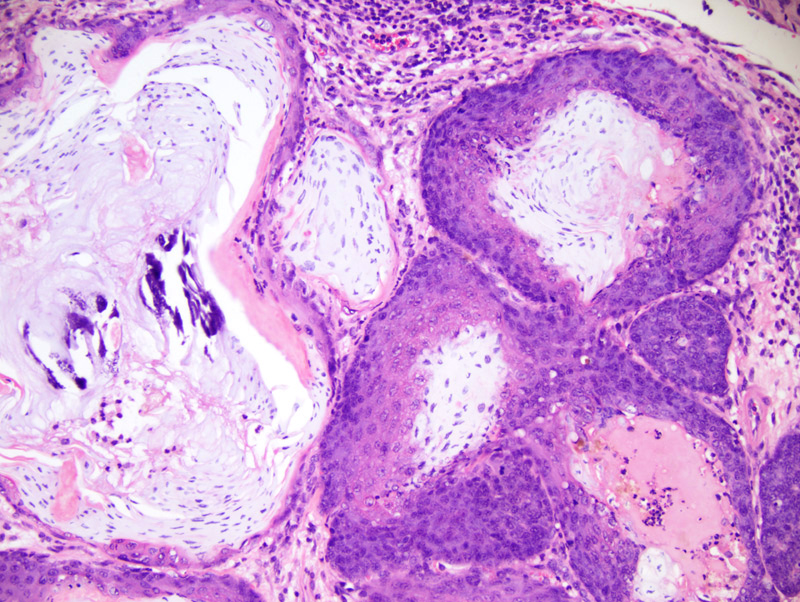Caption |
Secretory mammary adenocarcinoma with squamous differentiation: this photomicrograph illustrates an area of cornification. Epithelial neoplastic structures are separated by a large amount of dense fibrovascular stroma which is infiltrated by a moderate to large number of lymphocytes, plasma cells, neutrophils and macrophages (in decreasing order). Neoplastic cells are medium-sized, polygonal, with indistinct (in the basal layers of the neoplastic epithelium) to prominent (in the areas of squamous differentiation) cells borders, and a moderate amount of basophilic to acidophilic cytoplasm. The nucleus is central, round to oval, and medium-sized. Large amounts of cornified and partially mineralized debris are present at the center of most neoplastic nests. Keartinization is abrupt, and it results in the formation central cores of parakeratotic cells with a pale bluish cytoplasm. |
